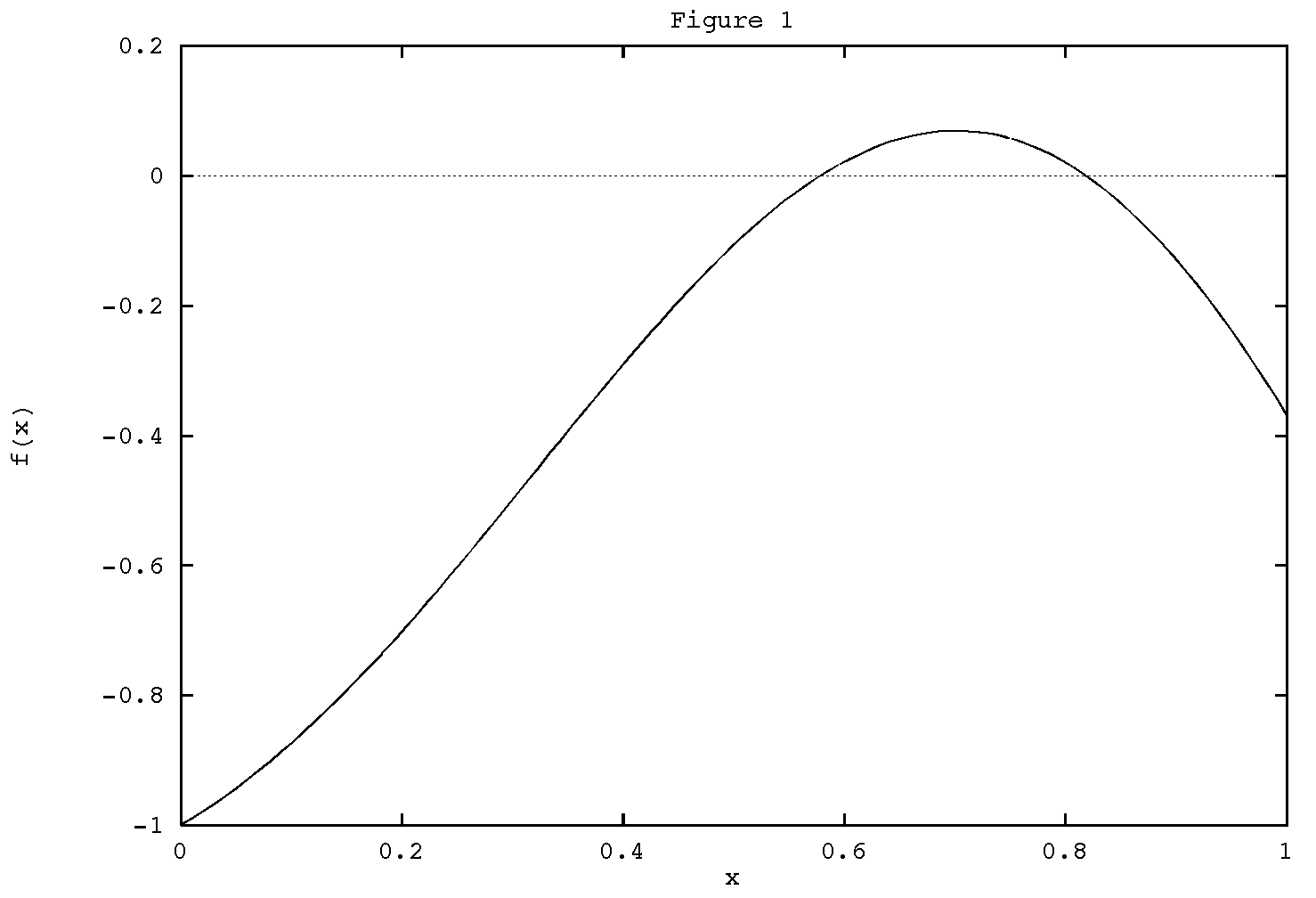


Next: Bisection
Methods: Up: 10.001:
Solution of Non-Linear Previous: 10.001:
Solution of Non-Linear
Introduction
In this class, we will discuss algorithms for finding the roots of non-linear
algebraic equations. The problem we are dealing with here can be stated
mathematically as follows: Find values of x such that the non-linear
equation, f(x)= 0 is satisfied. When we say f(x)
is a non-linear function of x, it means that f(x)
can not be written as a x + b , where a and b are
constants. When we say that f(x) is an algebraic equation,
it means that f(x) does not involve any differentials of
the form dny/dxn. A simple example
is that of the familiar quadratic equation where f(x)
= ax2 + bx + c = 0. Similarly, x-sin(x)=0
, x4
+ 35x3 + 20 x2 + x -3 = 0 etc.
are all examples of non-linear equations. Evidently, the roots can not
be obtained through analytical means except for a few simple cases. So
our aim is to learn numerical methods which will evaluate the roots approximately.
There are many ways to locate an interval a
< x < b where the curve defined by f(x)=0 intersects
the x axis (the x coordinate of the point of intersection
is a root of the equation f(x)=0). One way is to simply plot
the function in a given interval. Another way is to find two points on
the x axis, say x=a and x=b, such that
the condition f(a)*f(b)<
0 is satisfied. i.e., the function changes sign as we move along the x
axis from x=a to x=b (Let's assume that a
< b. Moreover, we restrict our attention to real roots.). This implies,
for continous functions, that the graph (curve) of the function y=f(x)
intersects the x axis at least once between x=a and
x=b.
Example 1.: For instance, let f(x)=x*sin(pi
x)-exp(-x). Since f(0)< 0 and f(2/3)>0 and since f(x)
is continuous in this interval, there has to be a root between 0 and 2/3.
Instead, we can simply plot the function using some mathematical software
shown in Figure 1.




Next: Bisection
Methods: Up: 10.001:
Solution of Non-Linear Previous: 10.001:
Solution of Non-Linear
Mark D Smith
1998-10-01

